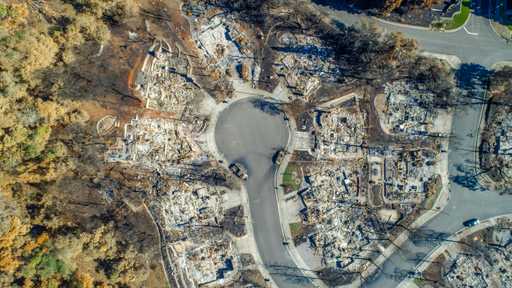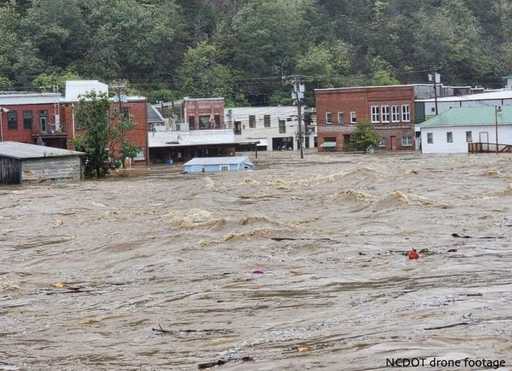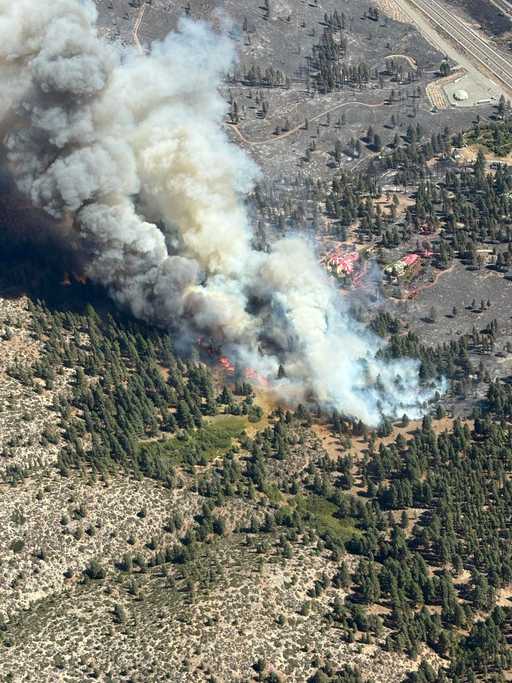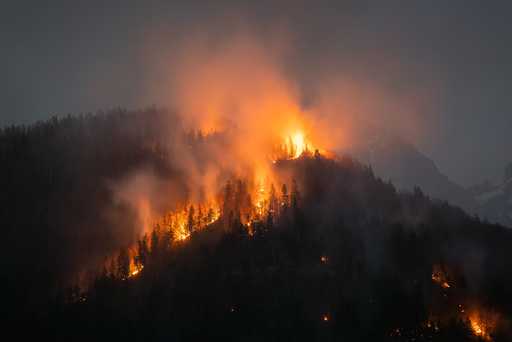
Disaster Response Philanthropy
Giving Strategically After Disaster
Recent News

January 23, 2025
Disaster Relief Efforts for Southern California Wildfires
Firefighters continue to battle multiple wildfires across southern California, which are fueled by extremely dry conditions and high winds. Thousands of structures and homes have been lost and dozens of people have been killed. If you wish to support the communities in need, please consider donating to one of these vetted organizations.
Read more8 Things to Consider for Effective Disaster Relief Philanthropy

1. Trust the Experts
- Seek out organizations whose mission is disaster philanthropy (Center for Disaster Philanthropy or InterAction)
- National volunteer organizations active in disaster relief
- These organizations will have lists of other organizations working in affected communities
- Look to experts in philanthropic advising (Community Foundation of Northern Nevada)
- Research to see if there is a community foundation in the region experiencing the disaster

Better yet, let a trusted expert do it for you
2. Do your Research
- Proper vetting is important, and of course, you want your donation to be used for its intended purpose
- Nonprofit vetting sites such as Guidestar are great tools
- If you don’t have the time or feel confident in doing your own vetting, the Community Foundation is a great resource
- We regularly provide recommendations for trusted, effective organizations that are doing great work in the disaster areas you are looking to support.

3. Trust-based Philanthropy
- The Community Foundation recommends carefully vetted organizations to give you peace of mind
- Trust that the organization you’re donating to will know the best use for the donation
- They are experts in their field

4. Keep Donations Flexible
- Avoid unnecessary restrictions and reporting requirements on gifts
- “General support” or “where most needed” increases the impact to the disaster you are supporting
- Private philanthropy can reach places and be utilized in ways that governmental and federal funding cannot

5. Cash is King
- Cash donations allow nonprofit organizations to be flexible to rapidly evolving needs
- The organization's needs may change over time depending on the disaster their community is facing
- Avoid donating physical items unless specifically requested by the organization. Often, organizations face a "second disaster,” which includes piles of household items, clothing, etc., that sit untouched in places recovering from natural disasters or other crises. Learn more about the second disaster in this Stanford article.

6. Think Long-Term
- While it’s important to act expediently (but thoughtfully) in the face of a natural disaster, realize that recovery efforts often take months or years
- Consider giving now and in 6 months to a year
From the Center for Disaster Philanthropy:
“Recovery is not only about the restoration of structures, systems and services – although they are critical. A successful recovery is also about addressing sources of inequitable and unjust outcomes, and individuals and families being able to rebound from their losses and sustain their physical, social, economic, mental, emotional and spiritual well-being.”

7. Support Local
While national or global disaster relief organizations, such as the Red Cross or Doctors Without Borders, are considered trusted, reliable resources, research what smaller, local organizations are doing work
- Local organizations are more nimble
- They know the community and their needs
- They will be in the community after the big nonprofit organizations leave
- Supporting local nonprofits supports the local community/economy

8. Work in Collaboration
- Consider leveraging your donation through matching campaigns
- Combine funds with other donors who want to support the same cause
- Contribute to specific disaster relief funds sent up by local Community Foundation or other disaster relief organizations to help pool resources and maximize impact
Disaster Philanthropy News

Disaster Relief Efforts for Southern California Wildfires
January 23, 2025
Firefighters continue to battle multiple wildfires across southern California, which are fueled by extremely dry conditions and high winds. Thousands of structures and homes have been lost and dozens of people have been killed. If you wish to support the communities in need, please consider donating to one of these vetted organizations.

Disaster Relief Efforts for Hurricane Helene
September 30, 2024
According to news sources, as of this morning, more than 120 people have died and over 2 million homes and businesses remain without power across six states in the southeastern United States as a result of destruction caused by Hurricane Helene. Many more people are missing and officials fear the death toll may rise in the coming days.

Disaster Relief - Davis Fire
September 09, 2024
According to the Reno Gazette-Journal, the Davis Fire, which began Saturday at the Davis Creek Campground in Washoe Valley, has grown to around 4,700 acres and has destroyed over a dozen structures. Nevada Governor Joe Lombardo has declared a State of Emergency, evacuation orders remain in place for several communities, and Washoe County School District canceled classes on Monday, while thousands of residents remain without power. Many are looking for ways to help.

Wildfire Disaster Relief Efforts
August 01, 2024
About 4,000 firefighters are working non-stop to contain the Park Fire in Northern California. We've compiled a list of resources working to provide relief to those impacted by what is the "biggest active blaze in the nation" and other fires impacting our neighbors

Disaster Relief - Taiwan Earthquake
April 04, 2024
Serious damage has been reported throughout the island, and intense rescue efforts are still underway to find those missing, especially in the hard-hit mountainous inland. We have prepared a list of carefully vetted organizations addressing the most pressing needs which include emergency shelters, medical care, and essential supplies for those affected.


Helping Morocco and Libya: Reliable Resources for Earthquake and Flood Relief
September 14, 2023
When disaster strikes, people from all walks of life come together to offer their support and assistance. The Community Foundation of Northern Nevada regularly recommends organizations to support where your gifts will make the most significant impact.



